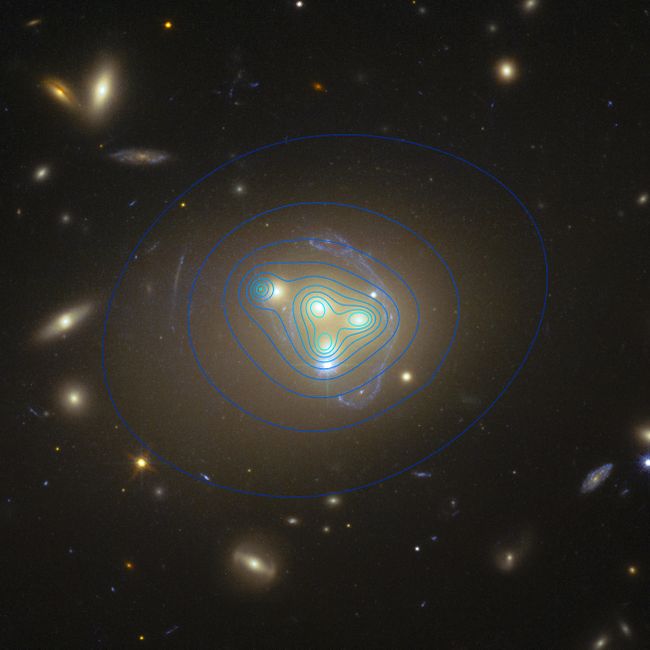‘White Holes’ May Be the Secret Ingredient in Mysterious Dark Matter
By Charles Q. ChoiApril 27, 2018 | White holes, which are theoretically the exact opposites of black holes, could constitute a major portion of the mysterious dark matter that’s thought to make up most of the matter in the universe, a new study finds. And some of these bizarre white holes may even predate the Big Bang, the researchers said.
Black holes possess gravitational pulls so powerful that not even light, the fastest thing in the universe, can escape them. The invisible spherical boundary surrounding the core of a black hole that marks its point of no return is known as its event horizon.
The distribution of dark matter in the galaxy cluster Abell 3827 appears as blue contour lines in this photo by the Hubble Space Telescope.
(Image: © ESO/R. Massey)A black hole is one prediction of Einstein’s theory of general relativity. Another is known as a white hole, which is like a black hole in reverse: Whereas nothing can escape from a black hole’s event horizon, nothing can enter a white hole’s event horizon.
Previous research has suggested that black holes and white holes are connected, with matter and energy falling into a black hole potentially emerging from a white hole either somewhere else in the cosmos or in another universe entirely. In 2014, Carlo Rovelli, a theoretical physicist at Aix-Marseille University in France, and his colleagues suggested that black holes and white holes might be connected in another way: When black holes die, they could become white holes.
